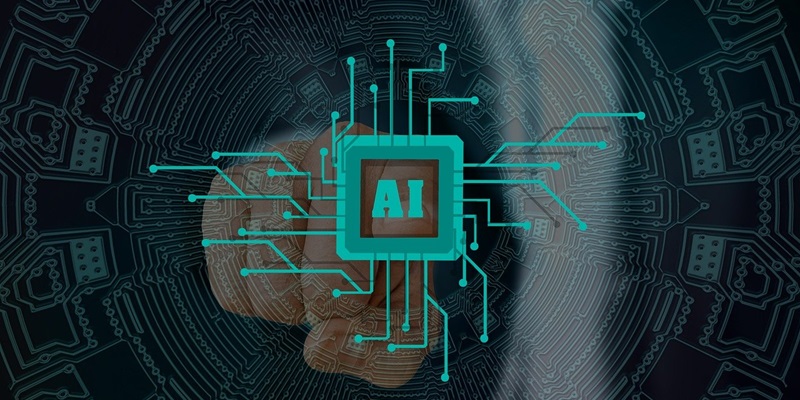Artificial Intelligence (AI) has been a transformative force in various fields, evolving distinctly over the years into two prominent paradigms: Traditional AI, also known as Classical AI or Good Old-Fashioned AI (GOFAI), and Generative AI. These two methodologies offer a spectrum of possibilities, each with unique benefits and limitations. This article delves into their underlying technologies, practical applications, and the evolving trends that define their roles in modern technology.
Traditional AI: Rule-Based Precision
Traditional AI is rooted in symbolic reasoning, heavily relying on rule-based systems, logic, and pre-defined protocols to tackle specific tasks. The empirical approach of Traditional AI includes methods such as rule-based systems, expert systems, and search algorithms. These systems excel in structured and predictable environments, providing reliable solutions in fields that require high precision.
In healthcare, Traditional AI is revolutionary in diagnostics, offering precise and reliable outcomes based on vast repositories of medical knowledge and predefined rules. For instance, expert systems can accurately diagnose diseases by processing patient data against a set of medical rules. Similarly, in finance, Traditional AI systems efficiently detect fraudulent activities by identifying patterns and anomalies based on historical data.
However, Traditional AI faces significant challenges when dealing with unstructured data. Its rigidity often limits cognitive flexibility and creativity, making it less effective in handling complex or ambiguous real-world scenarios. Nonetheless, its strengths in offering precision and reliability make it indispensable in environments where such attributes are critical.
Generative AI: The Creative Frontier
Contrasting sharply with Traditional AI, Generative AI employs advanced machine learning techniques, particularly neural networks, to emulate human creativity. Generative models like Generative Adversarial Networks (GANs) and Generative Pre-Trained Transformers (GPTs) learn patterns from vast datasets to produce novel content. This ability to generate text, images, and audio with remarkable fluidity has sparked innovation across various domains.
In media and entertainment, Generative AI has revolutionized content creation. For example, AI-generated art and music are now gaining mainstream acceptance, pushing the boundaries of human creativity. The pharmaceutical industry benefits from Generative AI by expediting drug discovery processes, predicting molecule behavior, and generating new chemical structures.
Yet, Generative AI is not without its drawbacks. Its dependency on large datasets can introduce bias and privacy issues, particularly in applications like law enforcement and hiring processes. Additionally, the capability to generate realistic but potentially harmful content raises significant ethical concerns. These risks necessitate stringent oversight and ethical guidelines to ensure responsible usage.
Evolving Trends and Application Synergies
A noticeable trend in AI development is the shift from the rigid, rule-based systems of Traditional AI to the more flexible and creative generative models. Traditional AI continues to dominate sectors requiring reliability and precision, such as healthcare diagnostics and financial fraud detection. Meanwhile, Generative AI’s proliferation is evident in areas demanding creativity and adaptability, such as digital art, automated customer interactions, and drug discovery.
Despite the apparent dichotomy, there is potential for synergistic integration of both approaches. Combining Traditional AI’s precision with Generative AI’s creativity could unlock unprecedented technological advancements. For instance, in autonomous vehicle systems, Traditional AI can ensure operational safety through rule-based navigation, while Generative AI enhances the system’s ability to adapt to unpredictable conditions on the road.
Addressing Challenges and Security Concerns
Both AI paradigms encounter unique challenges and security risks. Traditional AI systems often grapple with data quality issues and are susceptible to adversarial attacks that can manipulate their predefined rules. Generative AI, on the other hand, presents ethical challenges, especially with the creation of biased or harmful content, which can be exploited in disinformation campaigns or automated phishing schemes.
To mitigate these risks, it is crucial to implement robust security measures and ethical guidelines. Ensuring data integrity, developing adversarial defense mechanisms, and promoting transparency in AI processes are pivotal steps in addressing these challenges. Furthermore, fostering collaboration between AI researchers, ethicists, and regulators can pave the way for a safer and more responsible AI landscape.
Conclusion
Artificial Intelligence (AI) has revolutionized numerous industries, evolving into two main paradigms: Traditional AI, also known as Classical AI or Good Old-Fashioned AI (GOFAI), and Generative AI. Each has distinct strengths and weaknesses, creating a wide array of possibilities. Traditional AI focuses on rule-based systems and logical reasoning, which excel in structured problem-solving and decision-making processes. It has been instrumental in fields like finance, healthcare, and robotics. On the other hand, Generative AI leverages machine learning and neural networks to create new data, such as text, images, and music. This has opened doors for innovative applications in creative fields, marketing, and customer service. Understanding these paradigms can provide valuable insights into their contributions to modern technology and society. By examining their underlying technologies and practical applications, one can appreciate how these AI methodologies continue to evolve and shape the future. They offer different but complementary approaches, showcasing the diverse potential of artificial intelligence.

